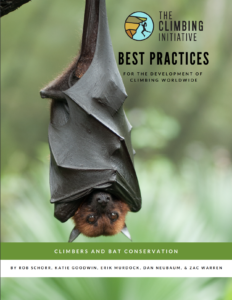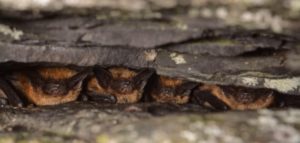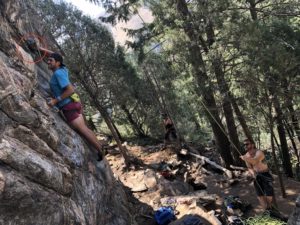A Colorado State University researcher has co-authored a chapter in the series Climbing Initiative Best Practice Project called “Climbers and Bat Conservation” that details the ways in which recreational climbers can aid researchers in bat conservation.

The Climbing Initiative, a nonprofit organization dedicated to the sustainable and equitable growth of climbing worldwide, has published its best practices project to gather the voices of climbing leaders around the world to shape the future development of the sport.
Co-author Rob Schorr, director of the organization Climbers for Bat Conservation and zoologist at CSU’s Colorado Natural Heritage Program, added a chapter to the series to expand the mission of the CBC. His organization, started in 2014, is a collaboration among climbers, bat biologists and land managers to understand bat roosting ecology and conserve bat populations.
Schorr said one of the greatest challenges for bat researchers is that bats, elusive mammals that can live up to 40 years, often roost beyond the reach of researchers and their equipment in areas like trees, cliffs and caves, leaving gaps in knowledge about their behavior and activity.

“Climbers’ ability to observe things like how bats use crack systems in cliffs are insights they’re uniquely qualified to provide,” Schorr said.
While climbers can more easily reach bats, there was a need for researchers to inform the recreationists how to make meaningful data from their observations. The best practices chapter serves as a practical guide for climbers who encounter the mammals while scaling rock formations.
Climbers can use the guide to:
- Become more educated about threats to bats like white-nose syndrome
- Learn how to reduce climbing activities that disturb bats
- Learn how to report bats they encounter
- Connect with local climbing organizations to share concerns for bats
- Learn ways to work with local compliance officers and land managers to address bat conservation and climbing management
Aside from the accessibility to bats climbers provide, the idea for collaboration also came from the similar interests and values that Schorr recognized between conservationists and climbers.
“We’ve come together in understanding that conservation biologists and recreationists have a shared value system. We all want to conserve—whether it be species or landscapes,” Schorr said.
Climbers’ role in conservation

The idea of utilizing climbers for bat research began long before the article, Schorr said. For over a decade, he has been working closely with climbers to understand their values and goals and align his mission at CBC to work in tandem with climbers’ abilities.
This partnership has helped him and other researchers to access the animals in ways that hadn’t been possible before. This unique relationship benefits both climbers and researchers, Schorr said.
“This relationship is mutually beneficial because, for one, climbers naturally are able to see bats where I, a scientist, cannot, and they see bats more frequently than I do,” Schorr said.
“For climbers, this is like a treasure hunt. They have a great memory of their climbs — sometimes going back 20 years — memories of where and when they’ve seen bats. They can now share that experience with us to impact the survival of bats.”
Schorr co-authored the chapter with Katie Goodwin and Erik Murdock, members of the Access Fund, a U.S. national climbing advocacy organization, Dan Neubaum, a wildlife biologist with Colorado Parks and Wildlife and Zac Warren, a vertical habitat specialist for Bat Conservation International and board member of the Zion Climbing Coalition.
To learn more about the organization Climbers for Bat Conservation, visit the website. For the full list of Best Practices Project by the Climbing Initiative, visit the website.